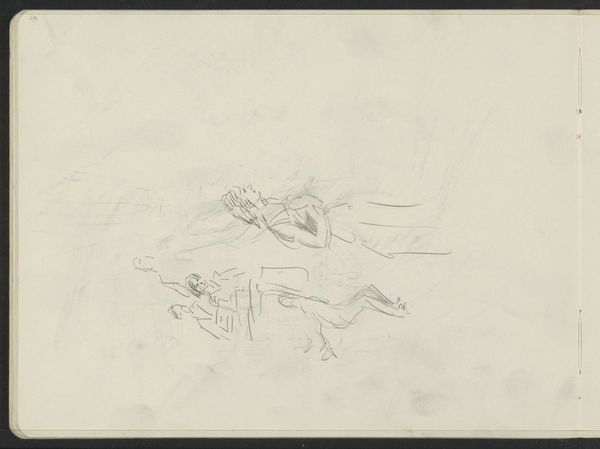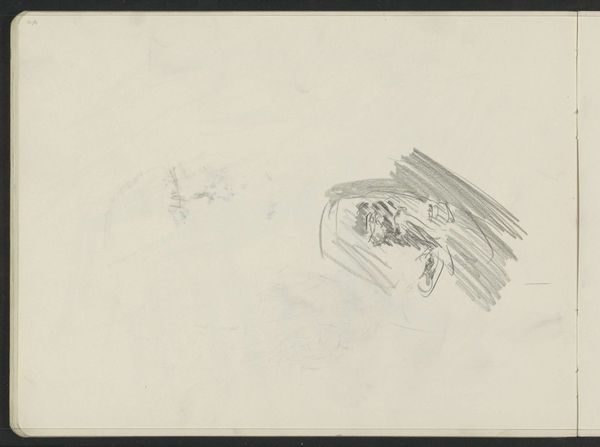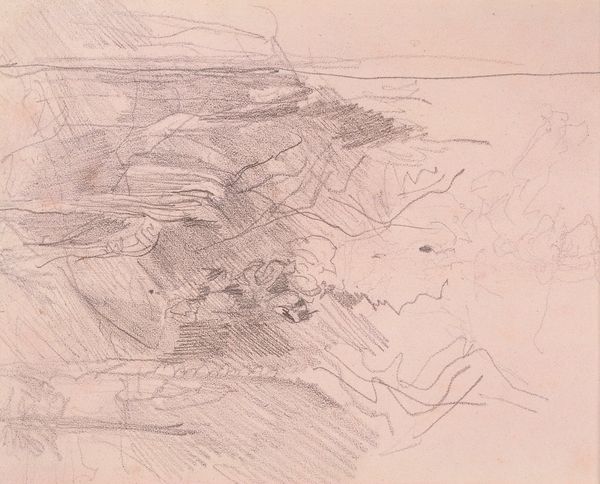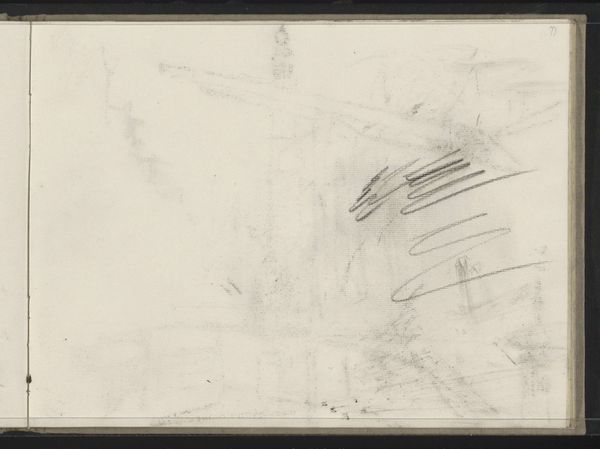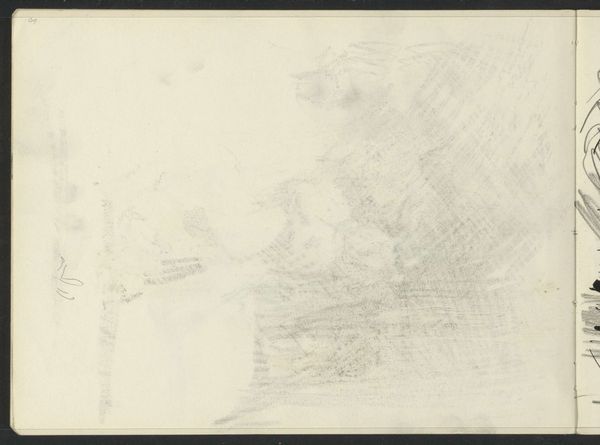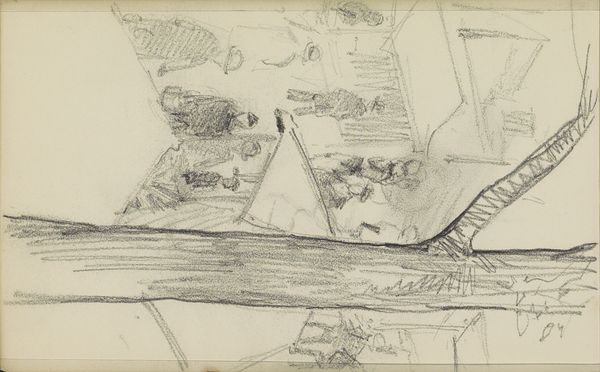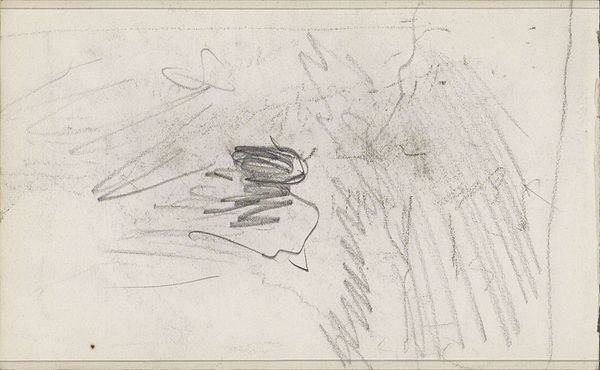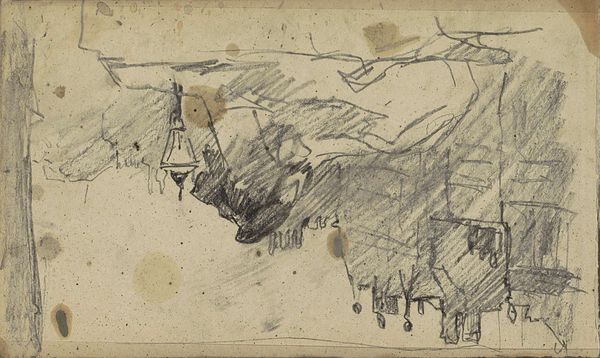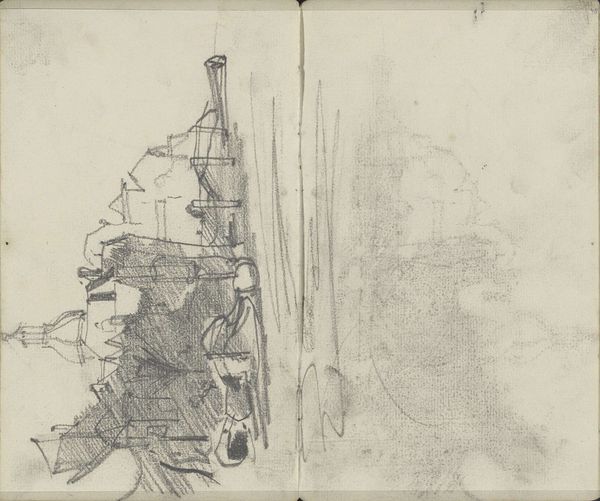
Copyright: Rijks Museum: Open Domain
Editor: This is "Two Women on the Beach," a pencil drawing by Isaac Israels, dated sometime between 1875 and 1934. I'm struck by how ephemeral it feels. It's just a sketch, really. What's interesting about it from your perspective? Curator: Looking at this Israels sketch, I am drawn to its incompleteness, to the immediacy of the artist’s hand and the materials used. Consider the pencil itself: its graphite core, mined and processed, transformed into an instrument of representation. Israels chose this accessible medium. What does the accessibility of pencil drawing mean for the potential reach and audience of the artwork? Editor: That's interesting! I hadn't thought about that – the economic aspect of choosing a humble material like pencil. So, instead of focusing on what the image depicts, we consider the artistic choice itself. Curator: Precisely. The rapid strokes and unfinished quality are telling, too. They point to a certain mode of production, one prioritizing speed and capturing fleeting moments. Pencil allows quick notation in response to changing natural or urban environments. What labor conditions might have enabled Israels to create this work? Were the women posed, or captured candidly? The “impressionistic” nature alludes to rapid depiction as a working method and mode of seeing, which has real implications in terms of class and opportunity. Editor: So you're suggesting that the sketchiness itself, and the pencil medium, open up questions about the process, and the conditions of artistic creation in this era? Curator: Exactly. The artwork ceases to be purely about representation and becomes a document, a trace of social and economic realities. It compels us to think critically about who has the opportunity to make art and whose stories are being told – and how they're being told – through those choices of media and approach. Editor: That's given me a totally new way of thinking about even a simple drawing like this. It’s more than just a pretty picture; it reflects a whole network of social and material relations. Curator: Indeed. Looking at the artwork as a material object embedded within a specific context transforms our viewing experience.
Comments
No comments
Be the first to comment and join the conversation on the ultimate creative platform.
